Cabinets and countertops play a pivotal role in shaping a kitchen’s functionality and aesthetic look. The right combination can make cooking more enjoyable, increase your home’s value and leave your guests awestruck with admiration. However, selecting the perfect mix is not as simple as it seems.
In this comprehensive guide, we delve into various aspects of these essential kitchen elements. You’ll discover how to choose the right cabinets and countertops for your kitchen, understand different materials, and learn about their maintenance requirements.
We’ll also provide you tips on how to pair them for the maximum aesthetic appeal and discuss the costs involved in their installation process. By touching upon the pros and cons of popular material choices, and offering stylish yet functional suggestions, we ensure that you can make an informed decision that resonates with your taste and budget.
From understanding the impact of your choice on home resale value to walking you through an installation guide, this content is packed with insights to aid you in your kitchen makeover. So, embark on this journey of creating a space tailored to your specific needs, with the latest trends in cabinets and countertops design.
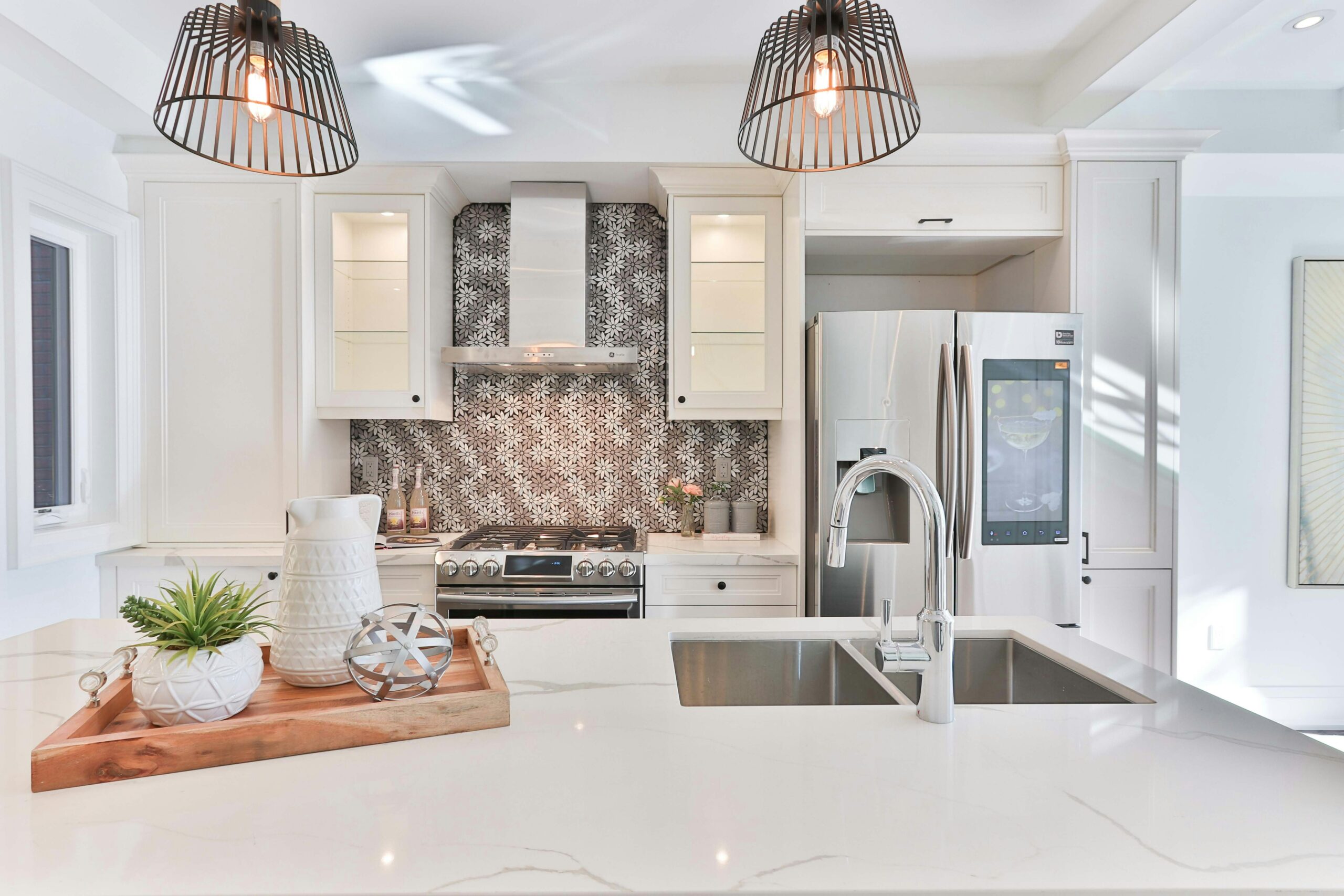
Choosing the Right Cabinets and Countertops for Your Kitchen
When it comes to your kitchen, cabinets and countertops play a crucial role in both functionality and aesthetics. Choosing the right cabinets and countertops can transform your kitchen into a stylish and functional space that meets all your needs. In this section, we will explore the factors you should consider when selecting cabinets and countertops for your kitchen.
Materials for Cabinets and Countertops
One of the first decisions you need to make is the material for your cabinets and countertops. There are various options available, each with its own unique characteristics and benefits. From classic wood to modern quartz, understanding the different materials will help you make an informed decision.
Maintenance of Cabinets and Countertops
Another important aspect to consider is the maintenance required for different cabinets and countertops. Some materials may require regular sealing or special cleaning products, while others are more low-maintenance. Understanding the maintenance requirements will ensure that your cabinets and countertops stay in good condition for years to come.
Pairing Cabinets and Countertops
The combination of cabinets and countertops can greatly impact the overall aesthetic appeal of your kitchen. It’s essential to choose a pairing that complements each other in terms of color, texture, and style. We will provide some tips and guidelines to help you create a cohesive and visually pleasing look.
Costs Involved
Installing new cabinets and countertops can be a significant investment. It’s important to have a clear understanding of the costs involved, including the materials, labor, and any additional expenses. We will discuss the factors that can affect the overall cost and provide some budgeting tips.
Pros and Cons of Different Materials
Each material used for cabinets and countertops has its own advantages and disadvantages. We will explore the pros and cons of popular options such as granite, laminate, stainless steel, and more. This will help you weigh the benefits and drawbacks and make an informed decision.
Suggestions for Stylish and Functional Design
In this section, we will provide some suggestions and ideas for creating stylish and functional cabinets and countertops. From maximizing storage space to incorporating innovative design elements, these suggestions will help you create a kitchen that is both practical and visually appealing.
Impact on Home Resale Value
The choice of cabinets and countertops can have a significant impact on the resale value of your home. Certain materials and designs are more desirable among potential buyers, while others may be less appealing. We will discuss how your choices can affect the resale value of your home and offer some insights for making wise decisions.
Installation Guide
Installing new cabinets and countertops requires careful planning and execution. In this section, we will provide a step-by-step installation guide to help you navigate the process smoothly. From measuring and preparing the space to assembling and installing the cabinets and countertops, we will cover all the essential steps.
Innovative Design Trends
Finally, we will explore the latest design trends in cabinets and countertops. From sleek and minimalist styles to bold and unique designs, staying updated with the latest trends can inspire you to create a kitchen that is both modern and timeless.
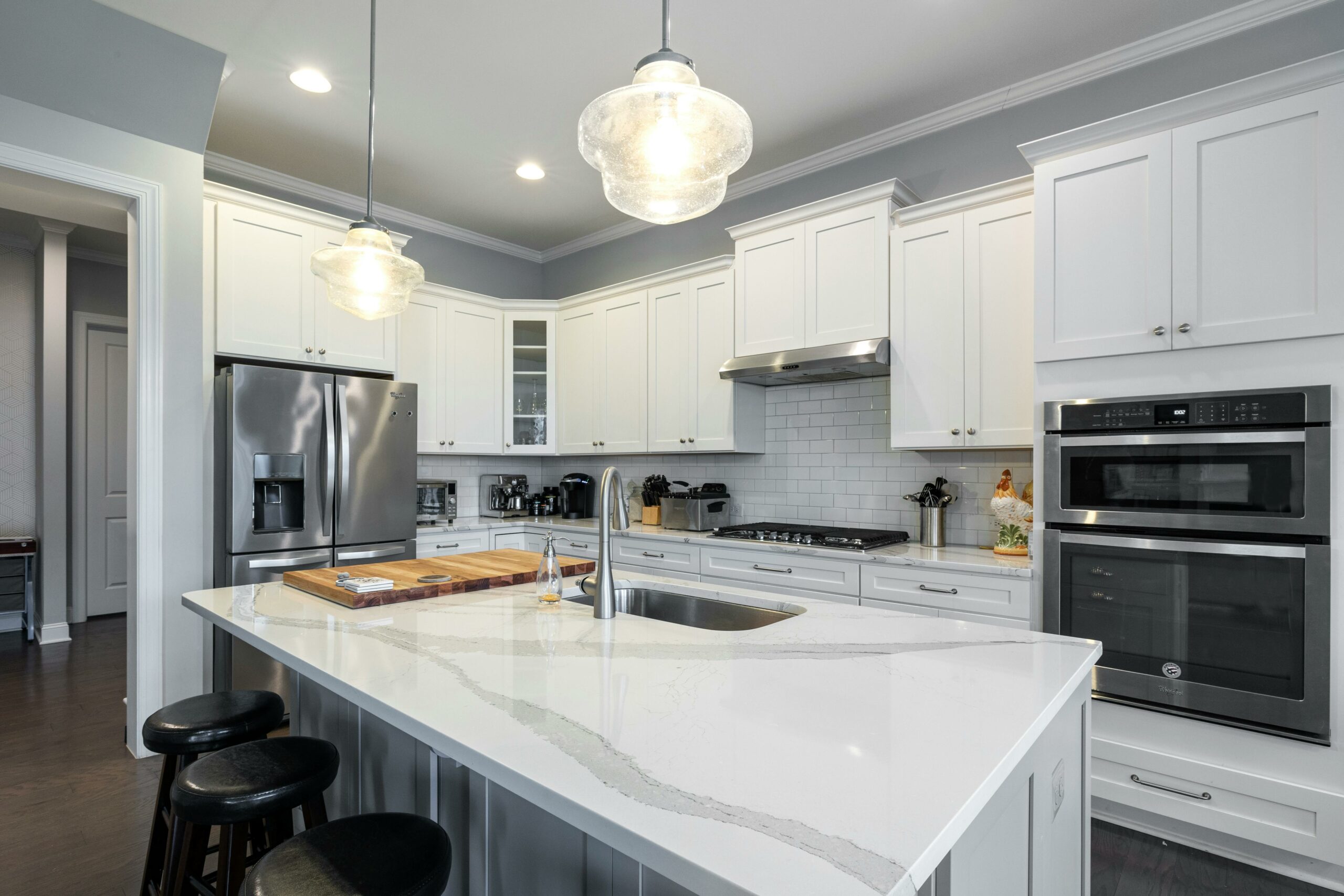
Getting to Know Different Materials for Cabinets and Countertops
When it comes to cabinets and countertops for your kitchen, there are various materials to choose from. Each material has its own unique characteristics and benefits. Understanding the different materials will help you make an informed decision and select the best option for your needs.
1. Wood
Wood is a popular choice for cabinets and countertops due to its natural beauty and durability. It can be crafted into various styles and finishes, making it versatile and customizable. However, wood requires regular maintenance to prevent damage from moisture and heat.
2. Laminate
Laminate is a budget-friendly option that mimics the look of natural materials like wood and stone. It is easy to clean and resistant to stains and scratches. However, it may not be as durable as other materials and can be prone to chipping or peeling over time.
3. Stainless Steel
Stainless steel is known for its sleek and modern appearance. It is resistant to heat, stains, and bacteria, making it an excellent choice for a busy kitchen. However, it can be noisy and prone to scratching, and may require regular polishing to maintain its shine.
4. Granite
Granite is a natural stone that adds elegance and beauty to any kitchen. It is heat-resistant and highly durable, making it suitable for high-traffic areas. However, granite can be expensive and requires regular sealing to prevent stains and damage.
5. Quartz
Quartz countertops are engineered using a combination of natural quartz and resin. They are non-porous, resistant to stains, and require minimal maintenance. Quartz offers a wide range of colors and patterns, allowing for endless design possibilities.
6. Concrete
Concrete countertops are known for their unique and industrial look. They are highly durable and resistant to heat and scratches. However, concrete countertops may require regular sealing to prevent staining and can be prone to cracking if not properly installed.
7. Marble
Marble countertops are prized for their luxurious and timeless appeal. They are heat-resistant and offer a smooth and cool surface for baking. However, marble is porous and can be easily stained, requiring regular sealing and maintenance.
8. Ceramic Tile
Ceramic tile countertops are affordable and come in a wide range of colors and patterns. They are resistant to heat and stains and are easy to clean. However, the grout lines between the tiles can be difficult to maintain and may require regular sealing.
By understanding the characteristics and benefits of different materials for cabinets and countertops, you can choose the best option that suits your style, budget, and maintenance preferences.
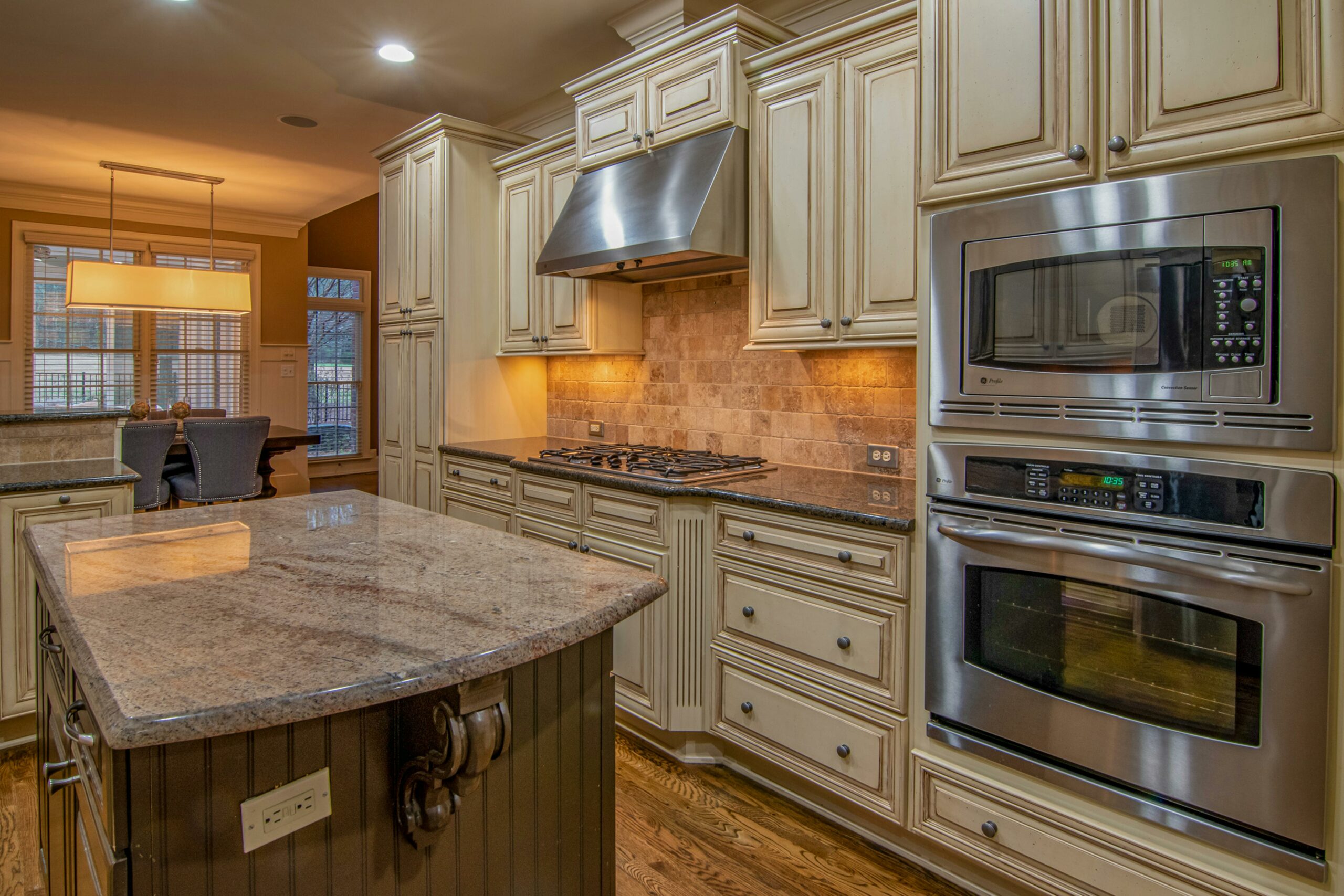
Understanding the Maintenance of Various Cabinets and Countertops
When it comes to cabinets and countertops, proper maintenance is essential to ensure their longevity and keep them looking their best. Different materials require different care, so it’s important to understand how to properly maintain the cabinets and countertops in your kitchen or bathroom.
Maintenance Tips for Cabinets:
-
- Cleaning: Regularly wipe down cabinets with a soft cloth and mild soap to remove dirt and grease. Avoid using harsh chemicals or abrasive cleaners that can damage the finish.
-
- Preventing Water Damage: Be cautious of water spills and leaks near cabinets, as prolonged exposure to moisture can cause warping or discoloration. Wipe up any spills immediately and ensure proper ventilation in areas prone to humidity.
-
- Protecting the Finish: Use coasters or placemats to prevent hot dishes or wet glasses from directly touching the cabinet surface. This will help prevent heat damage and water rings.
-
- Avoiding Scratches: Use cutting boards when preparing food and avoid dragging heavy objects across the cabinet surface to prevent scratches. Consider using felt pads on the bottom of objects that are frequently moved to minimize the risk of scratching.
Maintenance Tips for Countertops:
-
- Regular Cleaning: Wipe down countertops daily with a mild cleaner or soap and water to remove dirt and stains. Avoid using abrasive cleaners or scrub brushes that can scratch the surface.
-
- Sealing: Some countertops, such as granite or marble, require periodic sealing to protect against stains and damage. Follow the manufacturer’s instructions for sealing frequency and use a high-quality sealer.
-
- Avoiding Heat Damage: Use trivets or hot pads when placing hot pots, pans, or dishes on the countertop to prevent heat damage. Direct contact with hot objects can cause cracks or discoloration.
-
- Preventing Stains: Wipe up spills immediately, especially those from acidic substances like citrus juice or wine, as they can stain certain countertop materials. Use cutting boards when chopping or slicing to avoid direct contact with the countertop surface.
By following these maintenance tips, you can ensure that your cabinets and countertops stay in excellent condition for years to come. Regular cleaning and proper care will not only enhance their appearance but also extend their lifespan, saving you money in the long run.
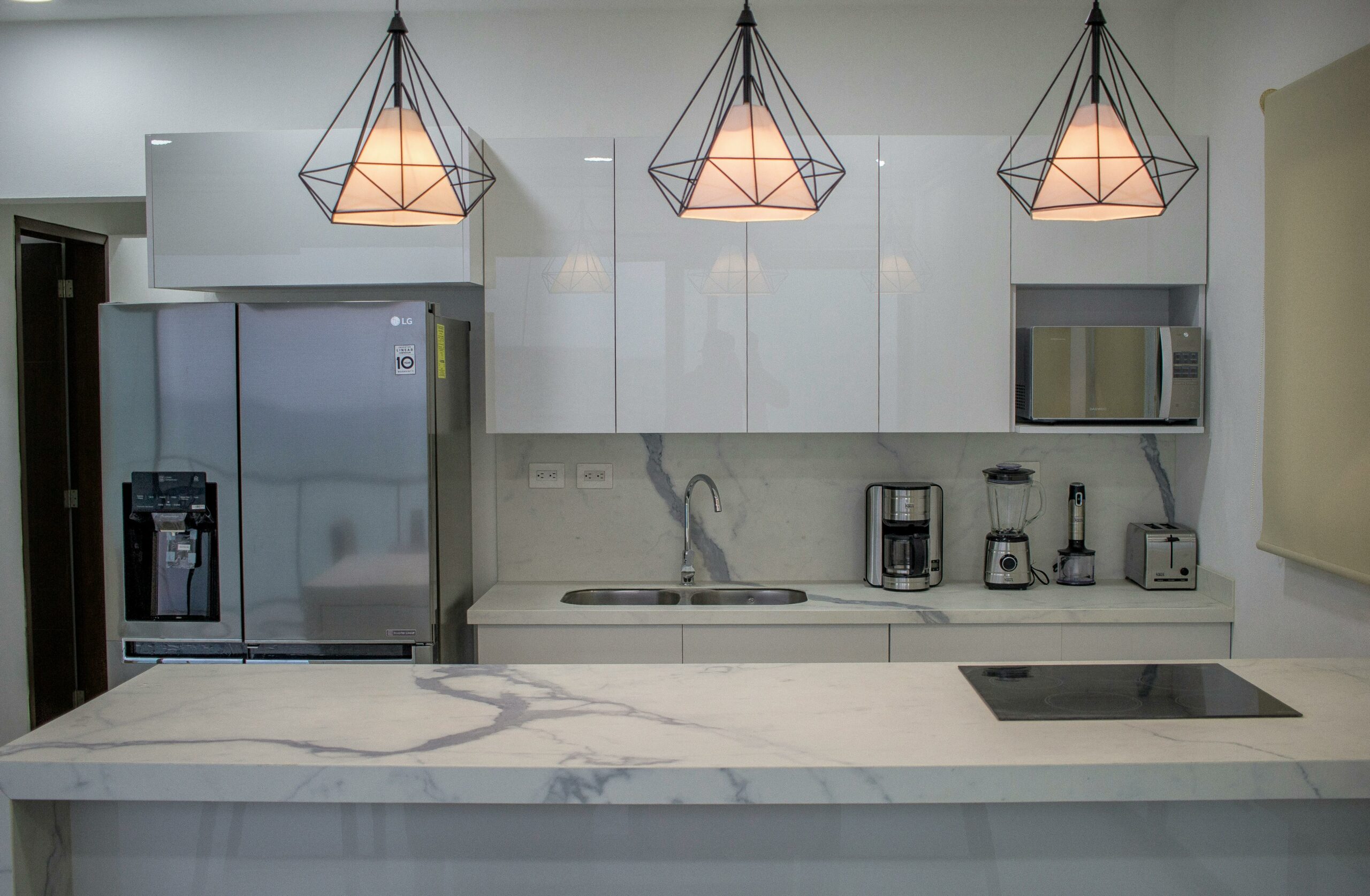
How to Pair Cabinets and Countertops for Aesthetic Appeal
When it comes to designing your kitchen, one of the most important factors to consider is how to pair cabinets and countertops for aesthetic appeal. The right combination can enhance the overall look and feel of your kitchen, creating a cohesive and visually pleasing space. Here are some tips to help you achieve the perfect pairing:
1. Consider the Style
Start by considering the style you want to achieve in your kitchen. Are you going for a modern and sleek look, or do you prefer a more traditional and rustic feel? The style of your cabinets and countertops should complement each other to create a harmonious design.
2. Coordinate Colors
Choose colors that work well together. If you have dark cabinets, consider pairing them with lighter countertops to create contrast. On the other hand, if you have light cabinets, you can opt for darker countertops to add depth to the space. Remember to consider the color scheme of the rest of your kitchen as well to ensure a cohesive look.
3. Contrast Textures
Another way to create visual interest is by contrasting textures. For example, if you have smooth and glossy cabinets, you can pair them with a textured countertop such as granite or quartz. This contrast adds depth and dimension to your kitchen design.
4. Balance Patterns
If you have patterned cabinets, it’s best to pair them with a solid-colored countertop to avoid overwhelming the space. On the other hand, if your cabinets are simple and plain, you can choose a more intricate pattern for your countertops to add visual interest.
5. Consider the Material
Take into account the material of both your cabinets and countertops. Different materials have different characteristics and appearances. For example, if you have wooden cabinets, you can pair them with natural stone countertops for a warm and inviting look. If you have sleek and modern cabinets, consider pairing them with stainless steel or concrete countertops for a contemporary feel.
6. Seek Professional Advice
If you’re unsure about how to pair cabinets and countertops, don’t hesitate to seek professional advice. Interior designers or kitchen remodeling experts can provide valuable insights and help you make the best choices for your space.
By following these tips, you can create a kitchen that not only functions well but also looks visually appealing. The right combination of cabinets and countertops can transform your kitchen into a stunning and inviting space that you’ll love spending time in.
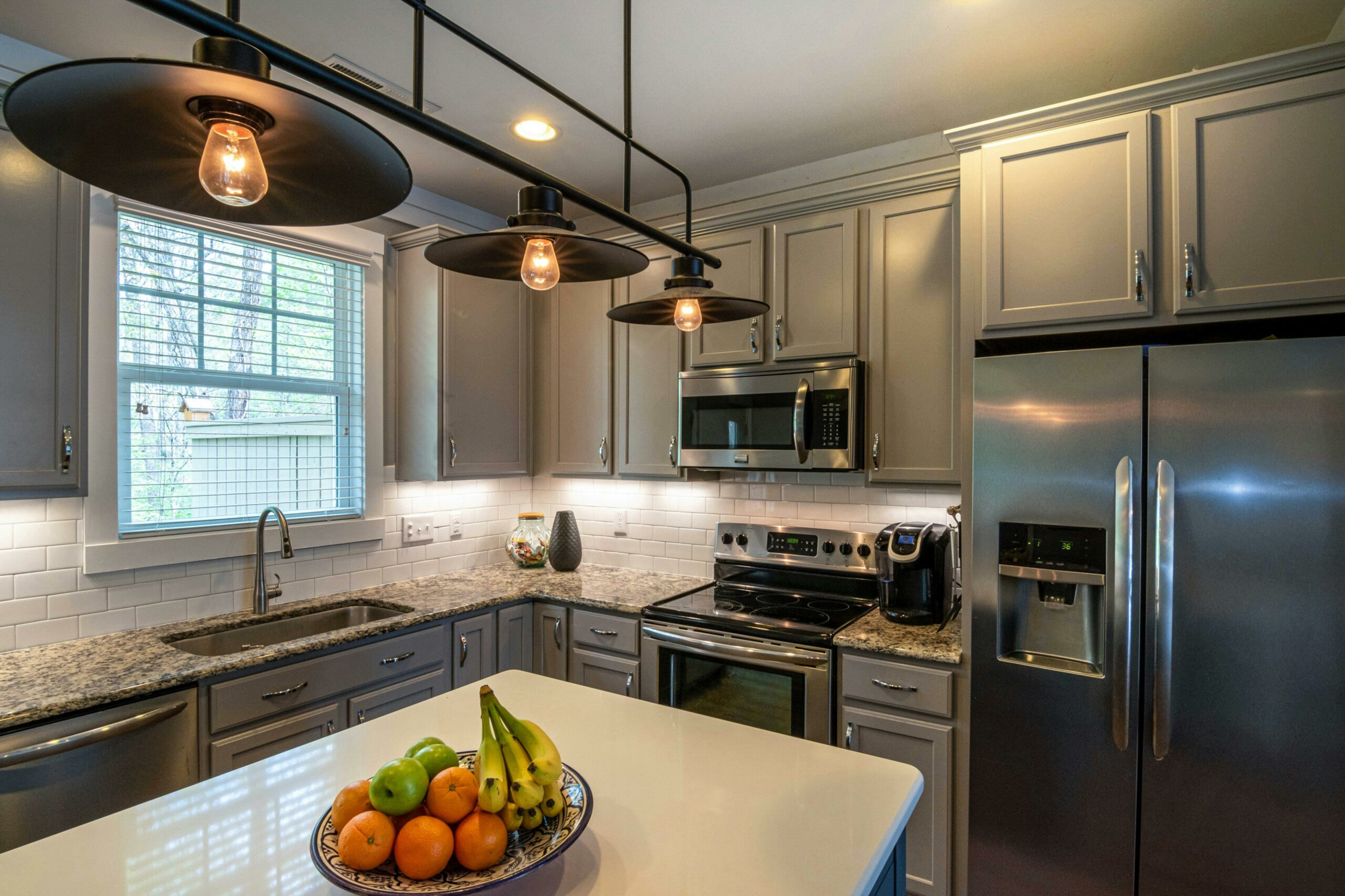
Costs Involved in Installing New Cabinets and Countertops
When it comes to installing new cabinets and countertops in your kitchen, there are several costs that you need to consider. These costs can vary depending on various factors such as the materials chosen, the size of your kitchen, and the complexity of the installation process. It’s important to have a clear understanding of these costs before embarking on your kitchen renovation project.
1. Material Costs
The first cost to consider is the cost of the cabinets and countertops themselves. The price of these materials can vary greatly depending on the type of material chosen. For example, solid wood cabinets tend to be more expensive than laminate cabinets. Similarly, natural stone countertops like granite or marble can be more costly compared to quartz or laminate options. It’s important to research and compare prices to find the best options that fit within your budget.
2. Installation Costs
In addition to the cost of the materials, you also need to factor in the cost of installation. Installing cabinets and countertops can be a complex process that requires skilled professionals. The installation costs can vary depending on the size of your kitchen, the complexity of the design, and the labor rates in your area. It’s recommended to get quotes from multiple contractors to ensure you’re getting a fair price for the installation.
3. Additional Costs
There are also additional costs that you may need to consider when installing new cabinets and countertops. These can include the cost of removing and disposing of the old cabinets and countertops, as well as any necessary plumbing or electrical work that may be required during the installation process. It’s important to factor in these additional costs to get a more accurate estimate of the total cost of your kitchen renovation.
4. Maintenance Costs
Lastly, it’s important to consider the long-term maintenance costs of the cabinets and countertops you choose. Some materials may require more frequent maintenance and regular sealing, which can add to the overall cost over time. It’s important to factor in these maintenance costs when making your decision to ensure you’re choosing materials that align with your budget and lifestyle.
In conclusion, installing new cabinets and countertops involves various costs that need to be considered. These include the cost of the materials, installation costs, additional costs, and long-term maintenance costs. By understanding these costs and planning accordingly, you can ensure that your kitchen renovation project stays within your budget while still achieving the desired aesthetic and functionality.
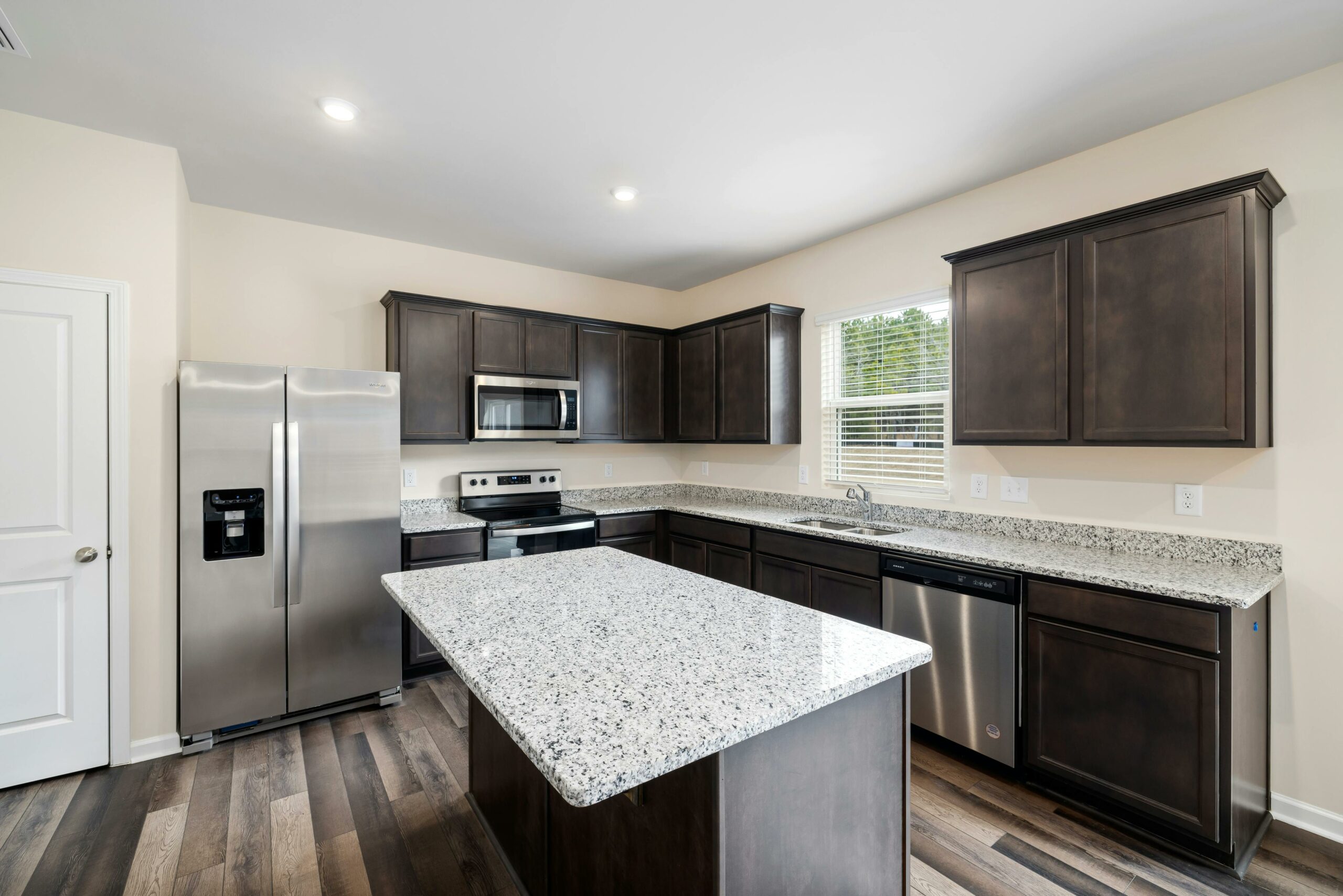
Pros and Cons of Popular Cabinets and Countertops Materials
When it comes to choosing cabinets and countertops for your kitchen, there are a wide variety of materials to choose from. Each material has its own pros and cons, and it’s important to consider these factors before making a decision. In this section, we will discuss the pros and cons of some popular materials for cabinets and countertops.
1. Wood
Wood is a classic and timeless choice for cabinets and countertops. It offers a warm and natural look that can complement any kitchen style. However, wood requires regular maintenance to keep it looking its best. It can be prone to scratches, stains, and water damage if not properly sealed and cared for.
2. Laminate
Laminate is a budget-friendly option for cabinets and countertops. It is available in a wide range of colors and patterns, making it easy to find a style that suits your kitchen. Laminate is also durable and easy to clean. However, it can be susceptible to chipping and scratching over time.
3. Granite
Granite is a popular choice for countertops due to its durability and natural beauty. It is resistant to heat, scratches, and stains, making it ideal for a busy kitchen. However, granite can be expensive and requires regular sealing to maintain its appearance and prevent stains.
4. Quartz
Quartz countertops are engineered using a combination of natural quartz and resin. They offer the look of natural stone with added durability and low maintenance. Quartz is non-porous, making it resistant to stains and bacteria. However, it can be more expensive than other materials.
5. Stainless Steel
Stainless steel is a popular choice for modern and industrial-style kitchens. It is durable, heat-resistant, and easy to clean. However, stainless steel can scratch easily and show fingerprints, requiring regular maintenance to keep it looking its best.
6. Concrete
Concrete countertops offer a unique and modern look. They can be customized to any shape, size, and color. Concrete is heat-resistant and durable. However, it can be prone to cracking and staining if not properly sealed and maintained.
It’s important to weigh the pros and cons of each material and consider your lifestyle and budget when choosing cabinets and countertops for your kitchen. By doing so, you can find the perfect combination that meets your needs and enhances the overall aesthetic of your kitchen.
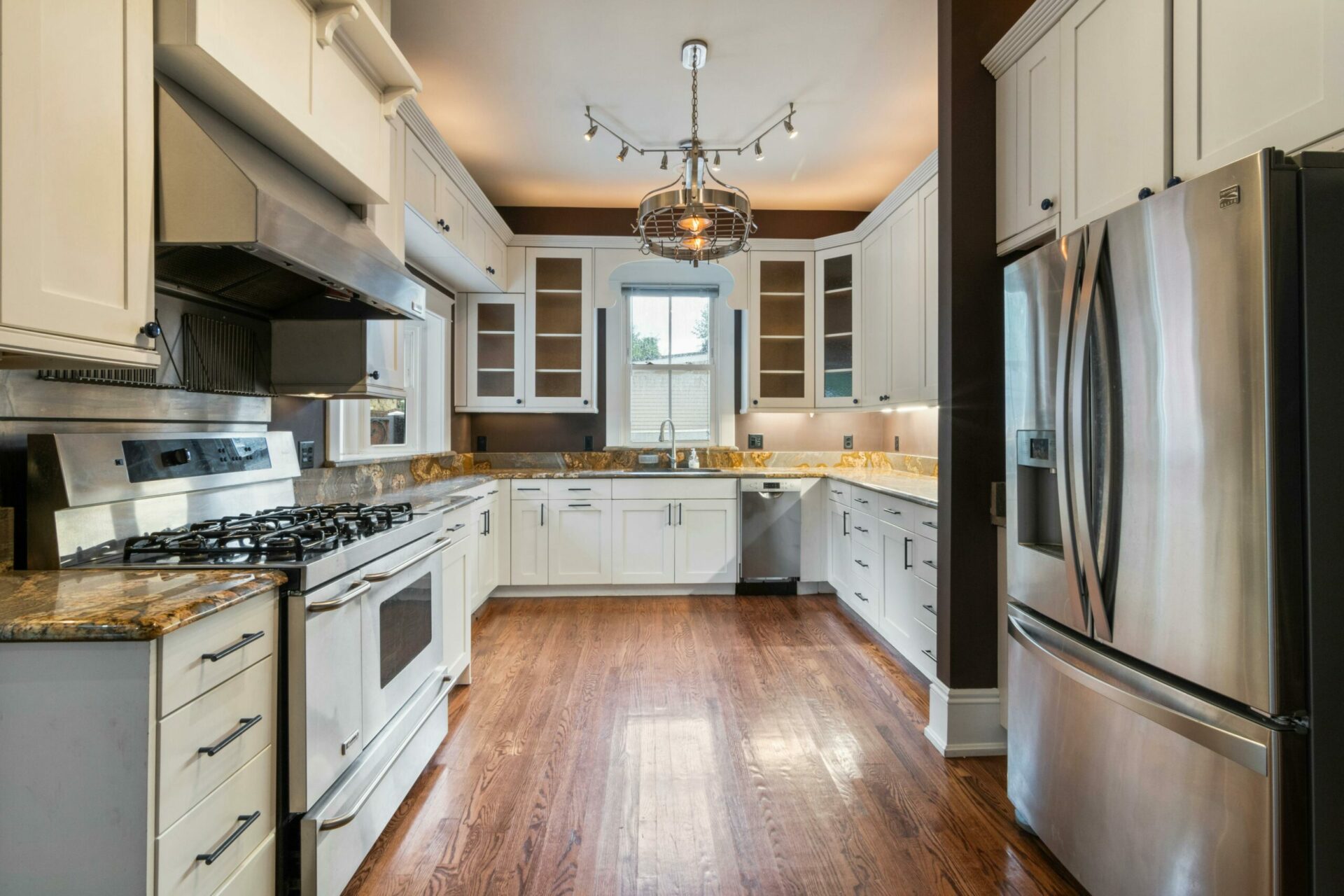
Suggestions for Stylish and Functional Cabinets and Countertops
When it comes to designing your kitchen, cabinets and countertops play a crucial role in both functionality and style. Here are some suggestions to help you choose cabinets and countertops that are not only visually appealing but also practical for your everyday needs.
1. Opt for Customized Cabinets
Consider customizing your cabinets to maximize storage space and make the most of your kitchen layout. Custom cabinets allow you to choose the size, shape, and design that best fits your needs, ensuring that every inch of your kitchen is utilized efficiently.
2. Choose Durable Materials
Invest in cabinets and countertops made from durable materials that can withstand daily wear and tear. Materials such as solid wood, quartz, and granite are known for their durability and longevity, making them ideal choices for high-traffic areas like the kitchen.
3. Incorporate Smart Storage Solutions
Make your cabinets more functional by incorporating smart storage solutions such as pull-out drawers, lazy susans, and built-in spice racks. These features not only help you stay organized but also make it easier to access your kitchen essentials.
4. Consider Open Shelving
If you want to add a touch of modernity to your kitchen, consider incorporating open shelving. Open shelves not only provide additional storage space but also allow you to display your stylish dinnerware and cookbooks, adding a personalized touch to your kitchen decor.
5. Mix and Match Materials
Don’t be afraid to mix and match different materials for your cabinets and countertops. For example, pairing wood cabinets with a marble countertop can create a beautiful contrast and add visual interest to your kitchen. Experiment with different combinations to find a style that suits your taste.
6. Pay Attention to Hardware
The hardware you choose for your cabinets can have a significant impact on the overall look and feel of your kitchen. Opt for sleek and modern handles or knobs that complement the style of your cabinets and countertops. This small detail can make a big difference in the overall aesthetic appeal of your kitchen.
7. Prioritize Functionality
While style is important, don’t forget to prioritize functionality when selecting cabinets and countertops. Consider your cooking habits, storage needs, and lifestyle to ensure that the chosen cabinets and countertops can meet your everyday requirements. Functionality should always be at the forefront of your decision-making process.
By following these suggestions, you can create a kitchen that is not only stylish but also highly functional. Remember to consider your personal preferences and needs when making decisions about cabinets and countertops, as they play a significant role in the overall design and functionality of your kitchen.

Impact of Cabinets and Countertops on Home Resale Value
When it comes to selling a home, every homeowner wants to get the highest possible resale value. One way to increase the value of your home is by investing in high-quality cabinets and countertops. These elements not only enhance the aesthetic appeal of your kitchen or bathroom but also play a significant role in attracting potential buyers.
1. Visual Impact: Cabinets and countertops are among the first things that buyers notice when they walk into a kitchen or bathroom. The style, color, and quality of these elements can make a lasting impression and greatly influence a buyer’s perception of the overall value of the home.
2. Functionality: Buyers are not just looking for beautiful cabinets and countertops; they also want functionality. Well-designed cabinets and countertops that provide ample storage space and convenient work surfaces are highly desirable. This can significantly increase the appeal and value of your home.
3. Durability: Cabinets and countertops made from high-quality materials are more durable and long-lasting. Buyers are willing to pay a premium for homes with cabinets and countertops that require less maintenance and are less likely to need repairs or replacements in the near future.
4. Trendy Designs: Keeping up with the latest design trends in cabinets and countertops can make your home more appealing to potential buyers. Features such as open shelving, integrated lighting, and unique materials can give your home a modern and stylish look, increasing its resale value.
5. Investment Return: While cabinets and countertops may require an upfront investment, they can provide a high return on investment when it comes time to sell your home. Upgraded cabinets and countertops can attract more buyers and potentially lead to higher offers, allowing you to recoup your investment and then some.
In conclusion, cabinets and countertops have a significant impact on the resale value of your home. By choosing the right materials, considering functionality, and staying up to date with design trends, you can increase the appeal and value of your home to potential buyers.
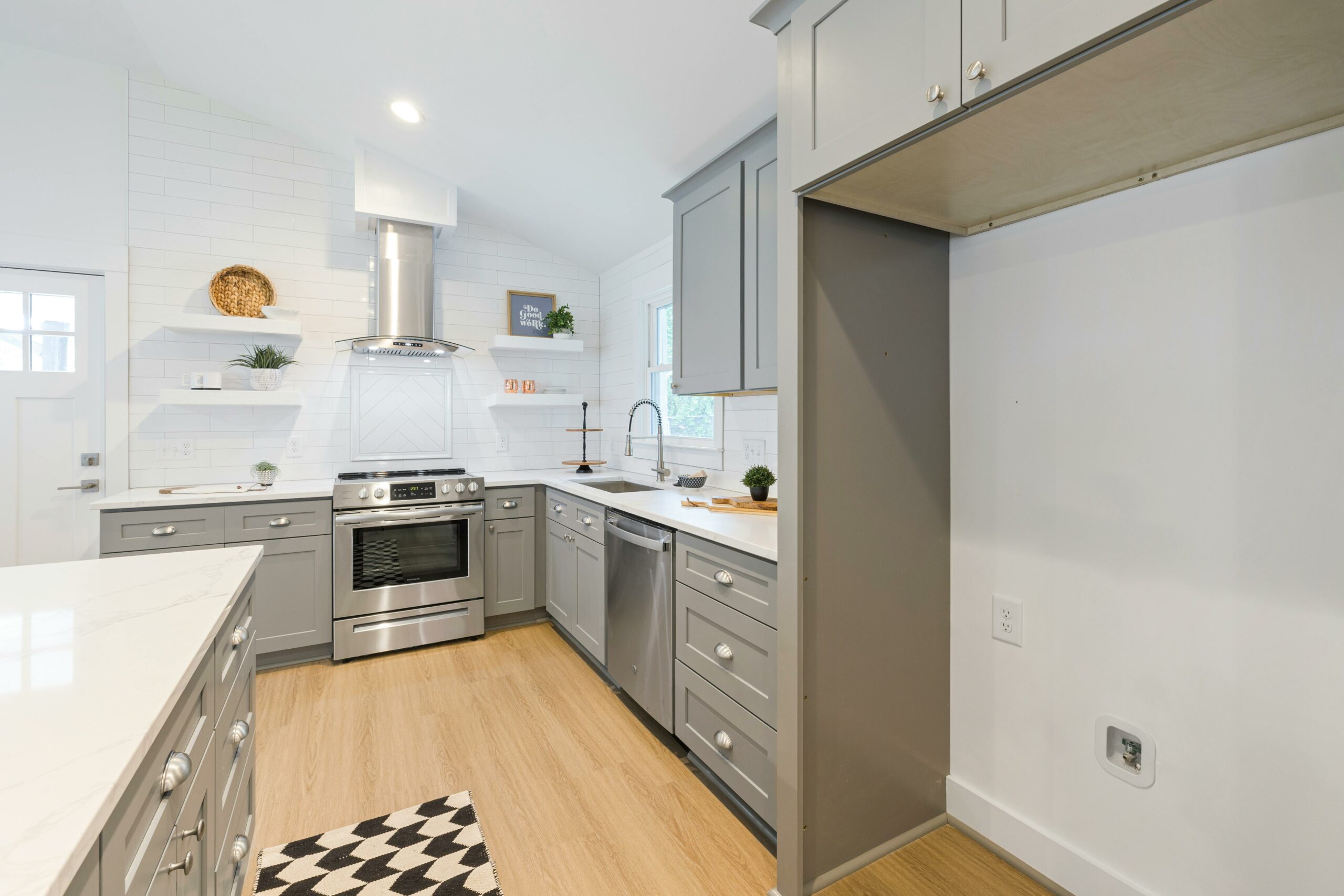
Installation Guide for Your New Cabinets and Countertops
Once you have chosen the perfect cabinets and countertops for your kitchen, it’s time to install them. The installation process may seem daunting, but with the right tools and steps, you can achieve a professional-looking result. Follow this installation guide to ensure a smooth and successful installation.
1. Prepare the space
Before installing your new cabinets and countertops, make sure the space is properly prepared. Remove any existing cabinets and countertops, and clean the area thoroughly. Measure the dimensions of the space to ensure a proper fit for your new cabinets and countertops.
2. Install the cabinets
Start by installing the base cabinets first. Use a level to ensure they are even and adjust as necessary. Secure the cabinets to the wall studs using screws. Next, install the upper cabinets, following the same level and secure process. Make sure to leave enough space for appliances and other fixtures.
3. Install the countertops
Once the cabinets are securely in place, it’s time to install the countertops. Measure and cut the countertops to fit the dimensions of your cabinets. Use a strong adhesive to attach the countertops to the cabinets, ensuring a secure and stable surface. Allow the adhesive to dry completely before using the countertops.
4. Connect plumbing and electrical
If your cabinets and countertops require plumbing or electrical connections, now is the time to complete these tasks. Hire a professional plumber or electrician if you are not confident in your abilities. Ensure all connections are properly secured and functioning before proceeding.
5. Finishing touches
Once the cabinets and countertops are installed and all connections are in place, it’s time for the finishing touches. Install any hardware, such as handles or knobs, on the cabinets. Apply a sealant or protective coating to the countertops to prevent damage and ensure longevity. Clean the entire area thoroughly and enjoy your newly installed cabinets and countertops.
By following this installation guide, you can successfully install your new cabinets and countertops and create a beautiful and functional kitchen space.
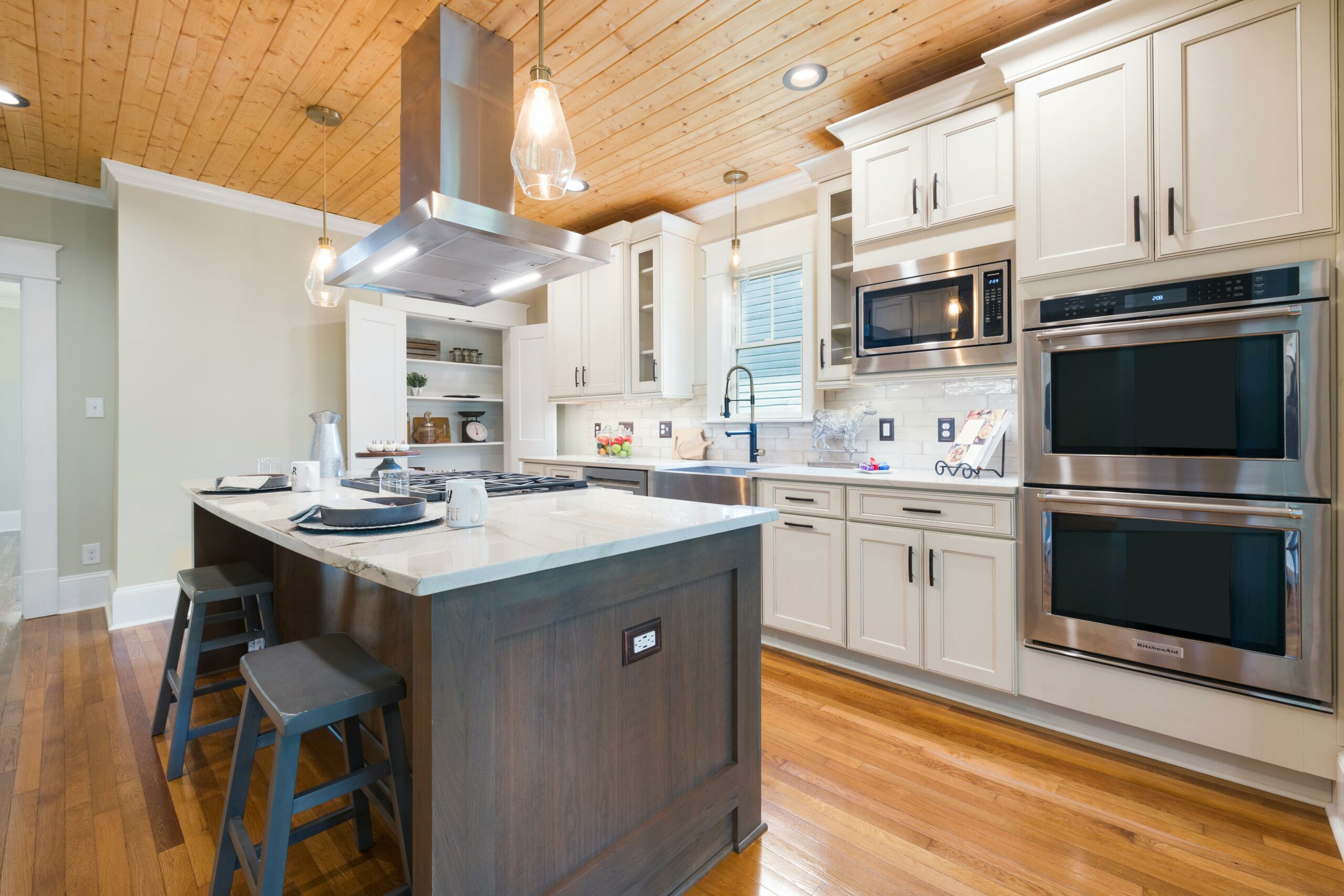
Innovative Design Trends in Cabinets and Countertops
When it comes to cabinets and countertops, there are always new and exciting design trends emerging. These trends not only enhance the aesthetic appeal of your kitchen but also improve functionality and efficiency. If you’re looking to give your kitchen a fresh and modern look, here are some innovative design trends to consider:
1. Minimalist Designs
Minimalism is a popular design trend that focuses on simplicity and clean lines. In terms of cabinets and countertops, this means opting for sleek, handleless cabinets and minimalistic countertops with simple edges. This design trend creates a streamlined and clutter-free look in your kitchen.
2. Bold Colors
Gone are the days of only having white or neutral-colored cabinets and countertops. Bold and vibrant colors are making a comeback in kitchen design. Consider incorporating cabinets in deep blues, emerald greens, or even rich burgundy. Pair these bold cabinets with contrasting countertops in white or light shades to create a striking visual impact.
3. Mixed Materials
Experimenting with different materials for cabinets and countertops can add visual interest to your kitchen. Mix and match materials such as wood, metal, glass, and even concrete to create a unique and personalized look. For example, you can have wooden cabinets with a sleek glass countertop, or a metal cabinet with a marble countertop.
4. Open Shelving
Open shelving is a design trend that not only adds a modern touch to your kitchen but also allows you to showcase your favorite dishes and decorative items. Instead of traditional upper cabinets, consider installing open shelves to display your collection of plates, bowls, and glasses. This design trend creates an open and airy feel in your kitchen.
5. Smart Storage Solutions
With the rise of smart technology, it’s no surprise that smart storage solutions are becoming a popular design trend. Incorporate cabinets with built-in organizers, pull-out shelves, and hidden compartments to maximize storage space and keep your kitchen organized. This design trend not only improves functionality but also adds a touch of innovation to your kitchen.
6. Statement Backsplashes
Make a statement in your kitchen by incorporating a bold and eye-catching backsplash. Whether it’s a mosaic tile pattern, a geometric design, or a vibrant color, a statement backsplash can instantly elevate the look of your cabinets and countertops. This design trend adds a focal point to your kitchen and creates a visually stunning backdrop.
By incorporating these innovative design trends in your cabinets and countertops, you can transform your kitchen into a stylish and functional space. Remember to choose designs that align with your personal style and preferences to create a kitchen that truly reflects your taste.


